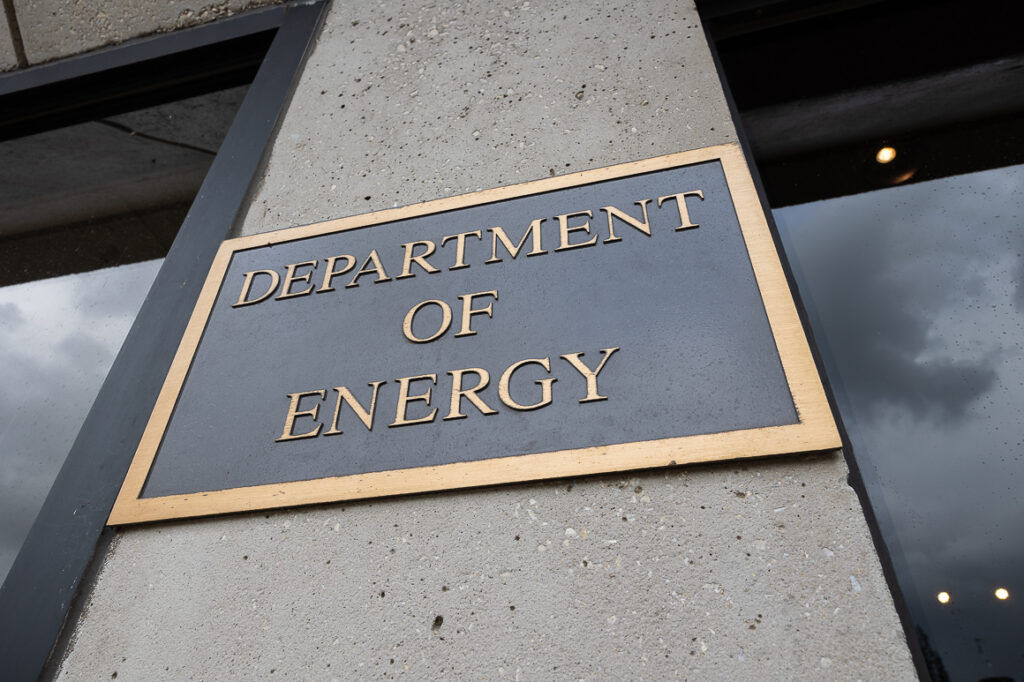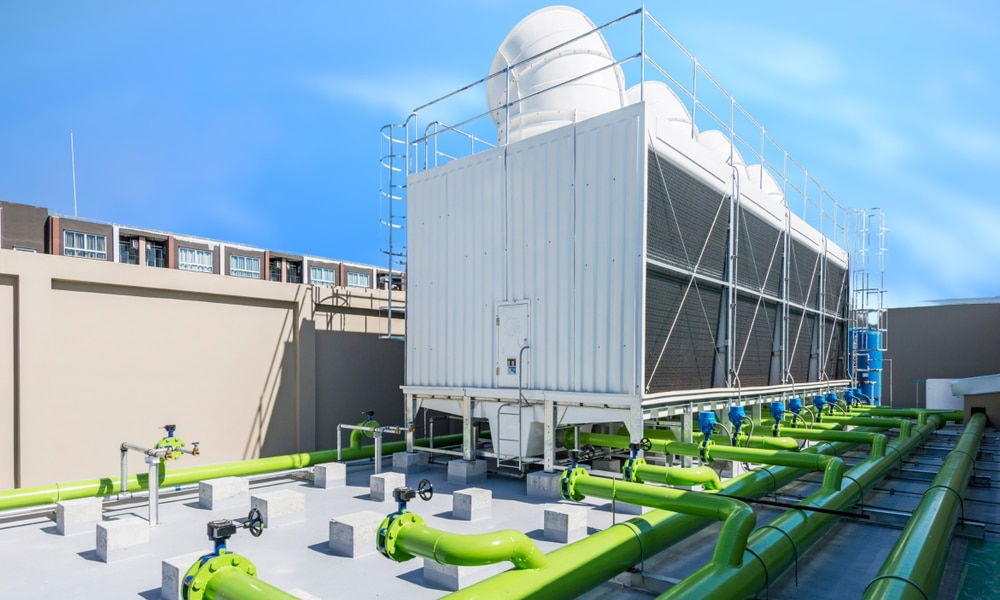
The U.S. Department of Energy (DOE) has committed to furthering its efforts to reduce carbon emissions, as shown by a recent $29 million investment in various projects focused on carbon dioxide (CO2) capture and conversion technologies.
This funding will help drive innovation and advance the Biden-Harris Administration’s goal of achieving a carbon-neutral power sector by 2035 and net-zero greenhouse gas emissions by 2050.
The projects, which were selected for their potential to transform carbon capture and conversion, highlight the DOE’s commitment to leveraging industry expertise and innovative technologies to tackle climate change.
>> RELATED: DOE’s Push for Hydrogen and Fuel Cell Technologies to Drive Decarbonization

Accelerating Carbon Capture Technologies
The DOE’s Office of Fossil Energy and Carbon Management (FECM) is at the forefront of efforts to develop and implement technologies that can capture and convert CO2 into valuable products.
According to Brad Crabtree, Assistant Secretary of Fossil Energy and Carbon Management, “The deployment of carbon capture and storage creates an opportunity to reduce emissions of additional pollutants beyond carbon dioxide, as well as to convert captured carbon emissions into environmentally beneficial products.”
With this funding, the DOE hopes to fast-track technologies that could be game-changers in the energy sector.
Innovative Approaches to Carbon Conversion
Seven projects were selected under this initiative to focus on turning CO2 emissions into value-added products.
For example, Air Protein, based in San Leandro, California, is working on a novel method to create a low-carbon footprint protein ingredient, helping to reduce greenhouse gas emissions from the agriculture industry.
Similarly, Kiverdi in Pleasanton, California, aims to transform waste carbon into industrially important fatty acids, using abundant CO2 feedstocks.
One particularly promising development comes from LanzaTech Inc. in Skokie, Illinois, which is advancing a process to convert waste CO2 into isopropanol, a chemical precursor used in the production of various products.
Auburn University in Alabama is also stepping up by exploring ways to convert CO2 into polyethylene plastic, using emissions from the pulp and paper industry as a feedstock.

>> In Other News: ExxonMobil Secures Largest CO2 Offshore Storage Site in the U.S.
Cutting-Edge Research at Universities
Academic institutions also play a significant role in advancing these technologies.
Washington University in St. Louis, for instance, is developing a process to convert CO2 into high-quality carbon nanotubes, which have potential uses in lithium-ion batteries.
These innovations could significantly reduce industrial emissions while simultaneously creating valuable products from waste gases.
Meanwhile, Auburn University is contributing by researching methods to convert flue gas emissions into polyethylene plastic, which is used in various industries.
By converting emissions into usable materials, these universities are bridging the gap between waste and productivity.
Tackling Non-Greenhouse Gas Emissions
Aside from capturing and converting CO2, several of the selected projects aim to reduce other harmful emissions.
For instance, American Air Liquide Inc. in Newark, Delaware, is developing a technology to reduce nitrogen oxides, enabling more efficient cold membrane CO2 capture from flue gases.
This would reduce not only CO2 emissions but also harmful nitrogen compounds. InnoSepra LLC, based in New Jersey, is testing methods to remove acids and acid gases responsible for emissions, helping industries meet stricter environmental standards.
Similarly, RTI International in North Carolina is working on recovering acid wash solutions, reducing secondary emissions in carbon capture technologies.
These projects highlight the broad scope of the DOE’s efforts, targeting not only CO2 but also other pollutants that contribute to environmental degradation.
The Role of the National Energy Technology Laboratory (NETL)
The DOE’s National Energy Technology Laboratory (NETL) will manage these projects, ensuring they align with the broader goals of the FECM.
NETL has a long history of working with industry partners and research institutions to advance carbon capture and storage technologies.
By overseeing these projects, NETL aims to scale up innovations, ensuring they move from research and development into commercial deployment.
Equitable Energy Solutions
In addition to advancing technological solutions, the DOE is also focusing on ensuring these innovations benefit all communities.
Selected project teams were required to submit a Research and Development Community Benefits Plan, which details their commitments to job creation, diversity, and benefits for disadvantaged communities.
This is in line with the Biden Administration’s Justice40 Initiative, which aims to ensure that 40% of the overall benefits of federal investments in climate and clean energy flow to disadvantaged communities.
A Look in the Future
The DOE’s $29 million investment in carbon capture and conversion technologies represents a significant step toward a more sustainable energy future.
By focusing on both reducing emissions and creating valuable products from waste gases, these projects have the potential to reshape industries and reduce the impact of fossil fuels on the environment.
With the backing of the Biden-Harris Administration, these technologies could play a critical role in achieving the U.S.’s climate goals of net-zero emissions by 2050.
Subscribe to the newsletter
Daily decarbonization data and news delivered to your inbox
Follow the money flow of climate, technology, and energy investments to uncover new opportunities and jobs.
Latest issues
-
From Louisiana to Europe: Certified Low-Carbon Ammonia on the Move
Inside This Issue 🚢 CF Industries, Trafigura, and Envalior Announce Shipment of Certified Low-Carbon Ammonia 🥤 Skytree Validates DAC System to Generate Pure, Beverage-Grade Liquid CO₂ On-Site 💻 Su...
-
What 43 CCS Projects and $3.5B Mean for U.S. Decarbonization
Inside This Issue 💰 Louisiana's $3.5B Carbon Capture Surge Sets National Decarbonization Blueprint 🌍 UN Climate Summit To Feature First-Ever Carbon Removal Pavilion At COP30 🚛 AtmosClear Selects E...
-
Inside the $26B Hydrogen Bet Starting Now
Inside This Issue 💧 Five US Green Hydrogen Projects Begin 2025 Shift to Cleaner Energy 🪨 Conestoga Energy Submits Class VI Carbon Capture & Sequestration Permit Application to EPA Region 7 ⚡ P...
Company Announcements
-
Lyon-Saint Exupéry Airport (LYS) has reached net zero emissions a year early, marking a major sustainability milestone for VINCI Airports’ global decarbonisation programme. VINCI Airports has anno...
-
Brossard, Quebec – TheNewswire – October 6, 2025 – Charbone Hydrogen Corporation (TSXV: CH; OTCQB: CHHYF; FSE: K47) (“Charbone” or the “Company”), a company dedicated to building North America’s fi...
-
CF Industries, Trafigura, and Envalior Announce Shipment of Certified Low-Carbon Ammonia
NORTHBROOK, Ill., October 3, 2025 – CF Industries Holdings, Inc. (NYSE: CF), the world’s largest producer of ammonia, today announced a shipment of certified low-carbon ammonia from its Donaldsonvi...
-
Orlando, FL., Oct. 06, 2025 (GLOBE NEWSWIRE) -- Sustainable Green Team, Ltd. (OTC:SGTM) (“SGTM” or the “Company”), a leader in environmentally beneficial solutions, today announced the formation of...